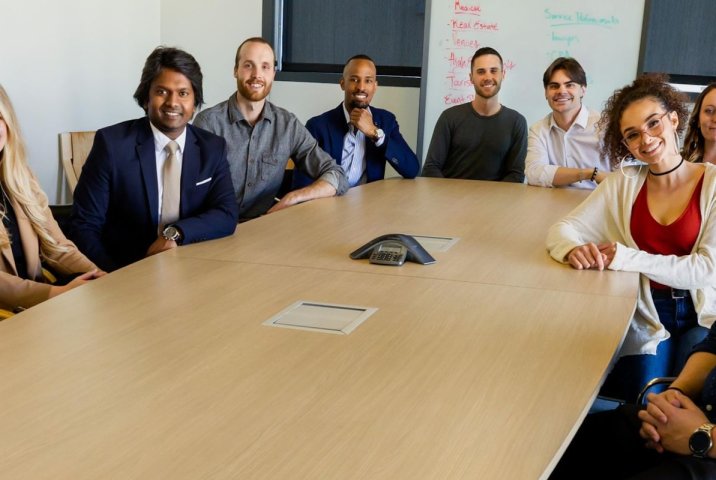How reverse mentoring can elevate your DEI agenda


Judy is Senior Vice President of Diversity, Equity and Inclusion Advisory at AMS
6 August 2021 — Diversity, Equality & Inclusion (DEI) has always been important; however, it has emerged as a singularly significant business imperative over the past year as movements for justice and equality have pushed momentum toward building more inclusive organisations. The business case is, of course, compelling – embracing and promoting DEI is linked to increased organisational performance and employee engagement.
Keeping up the momentum on DEI
Research has shown that the vast majority of organisations have accelerated their commitment to DEI since a period of protest erupted around the world following the murder of George Floyd.
However, despite the new impetus, we are still falling short. According to a recent survey by PwC, a lack of holding leaders accountable is a key reason. They found that although three-quarters of organisations (76%) say DEI is a priority for them, only a quarter (26%) have DEI goals for their leaders.
Then there is the intense focus on getting the diversity “mix” right—meaning increasing the number of underrepresented hires and employees at all levels. While this is vitally important as companies, strive to embrace innovation and have employee populations more reflective of the communities they operate in and the consumers they serve, setting and meeting diversity targets is not the cure to all problems.
Monitoring your metrics can give you important data-driven insights on which to act; this is key for businesses to process change. However, simply hitting a target—for a moment in time—won’t result in sustainable change unless organisational cultures adapt to fully include the diverse perspectives that come along with their new employees. The inclusive behaviours needed to instigate far-reaching change have to be modelled from the top.
Reverse mentoring explained
So, what can organisations do to achieve better DEI results? A practice that is working well within AMS and several of our clients’ organisations is reverse mentoring. This equips leaders with inclusive leadership skills and cultural awareness by having junior employees from underrepresented groups guide leaders rather than the other way round.
This isn’t just about young, tech-savvy employees teaching older business veterans the ropes of something like social media (though this could be beneficial, too!) Reverse mentoring helps leaders better understand cultural differences and challenges and the unique value-added insights that can come from listening to diverse perspectives.
But with reverse mentoring being a relatively new concept for some, how can you make it really work? Here are some points to consider:
1. Have a flexible structure
For any mentorship programme to be effective, you must have a plan of action. A kick-off meeting where all participants gather is a great way to get everyone more comfortable in each other’s company. Establish a timeline, including frequency, duration, objectives, and potential topics to be discussed so that all individuals know what to expect.
This also fosters a sense of commitment to each party’s growth. It will also make the junior mentor feel that their voice is being heard, which increases a sense of belonging; this can result in them feeling that they are working for an organisation they want to be a part of for the long term. A word of caution, though, don’t be too rigid – as a reverse mentor to our own CEO, David Leigh, once said, “We liked having the freedom of being able to talk about what’s relevant for us now.”
2. Treat it as two-way development
It is worth remembering that any mentoring exercise is a two-way interaction; it’s professional development for both mentor and mentee, who will learn in abundance from each other. Given that the junior staff member could feel uncomfortable with the hierarchical difference, this should be mentioned at the outset so that they don’t feel too much pressure always to assume the ‘teacher’ role.
As the relationship grows, so too will trust. The mentor will be able to open up more about any issue they wish to discuss while also taking the opportunity to ask for advice from their more experienced colleague. This should facilitate a very natural and free-flowing conversation from which both parties learn. The relationships often last well beyond the formal programme and provide mutual benefits to both parties.
3. Share personal stories
Perhaps the most rewarding part of the process is that it provides a platform for the mentor and mentee to talk about their personal life and experiences. They can mention their family upbringing and their challenges growing up in their community and school, what it taught them, and how it shaped their character and outlook on life. The two parties may have also been affected by current events in different ways. The process allows them to describe their reactions and feelings on important subjects of the time.
For a mentee, listening can really help them gain a deeper understanding of a person’s outlook from a different cultural group than their own, including their motivations and unique challenges, as well as how and what makes them tick. They may also find that they share common interests and passions, which will only cement that bond.
4. Keep on track
Whether using an external person or an internal leader, make sure that you have someone responsible for the programme and ensures that momentum is maintained. They may have to step in and assist where needed; for example, there is the possibility that the mentor and mentee might not be a perfect match, in which case you can look to pair them with different people.
It is also important to attribute an end date so that there is no feeling of obligation to continue once the official mentoring period is over. Both parties can continue to meet or keep in touch informally, should they wish to do so.
Final thoughts
For any DEI strategy to be truly effective, it needs the buy-in of senior management and a change in leadership behaviours.
Reverse mentoring will help leaders significantly increase their understanding, awareness, and appreciation of differences and the importance of creating more inclusive cultures where everyone can fulfil their potential. It will improve talent retention and attraction efforts, which can benefit your business’s overall performance.
Perhaps more importantly, though, it will help build a more inclusive culture where mutual understanding thrives.
To gain further insight on this topic, register for DiversityQ’s Rethinking Inclusive Mentorship event on 24th June.
Originally published 12 May 2021 in DiversityQ
More articles
Overview of Innovation Board and insights on most the most recent meeting
During the recent Innovation Board meeting, the group discussed how talent teams will need to adapt to deliver success in a changing world of work.
From Cost Centers to Value Creators: How AMS Is Redefining GCCs
Global Capability Centers in 2025 are strategic hubs for talent and innovation. Learn how AMS is transforming GCCs in India to drive agility, growth, and enterprise value.
Who Benefits from DEI and Why It Matters?
Who does DEI benefit? Discover how inclusive workplaces lift profit, innovation, and employees across every demographic, backed by McKinsey and Deloitte data.






